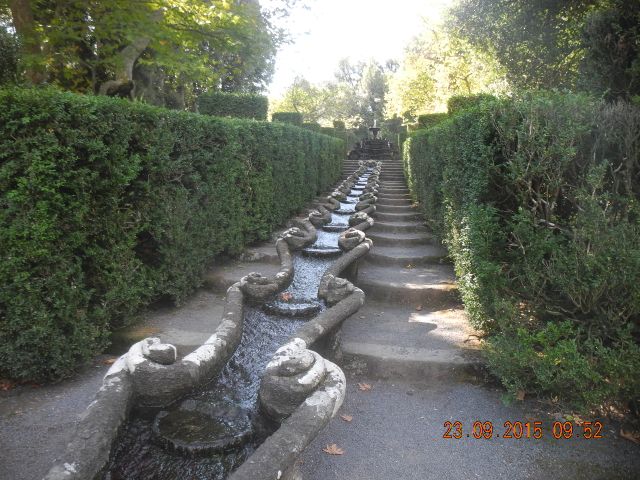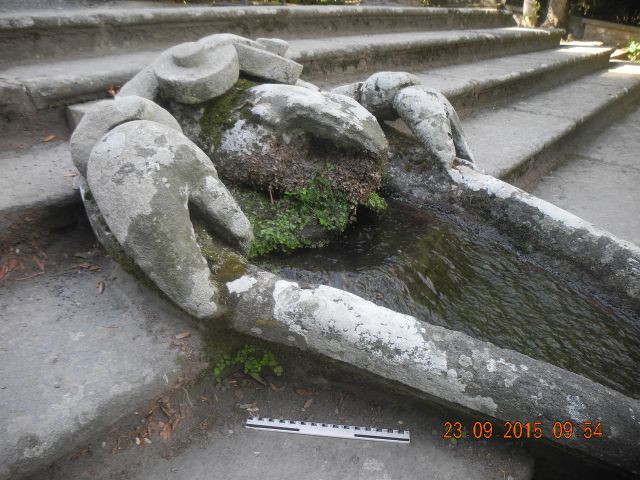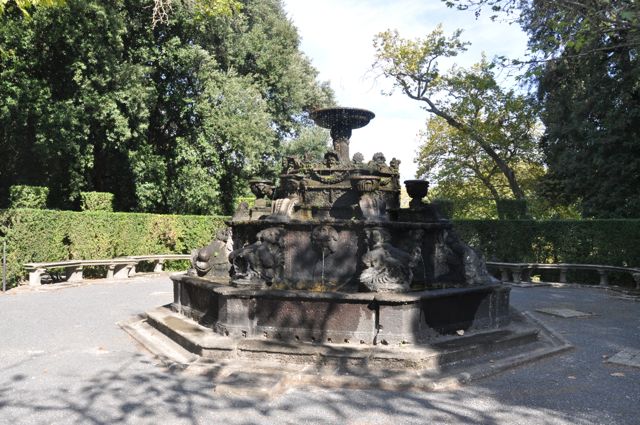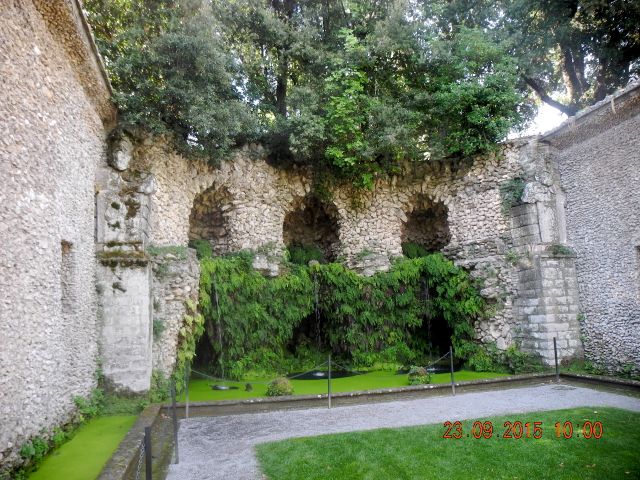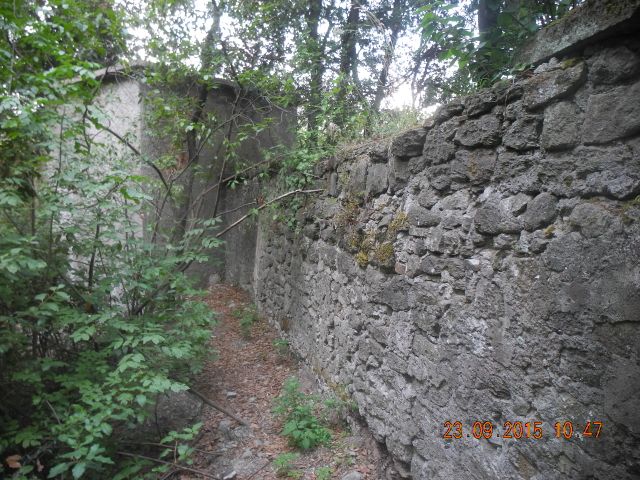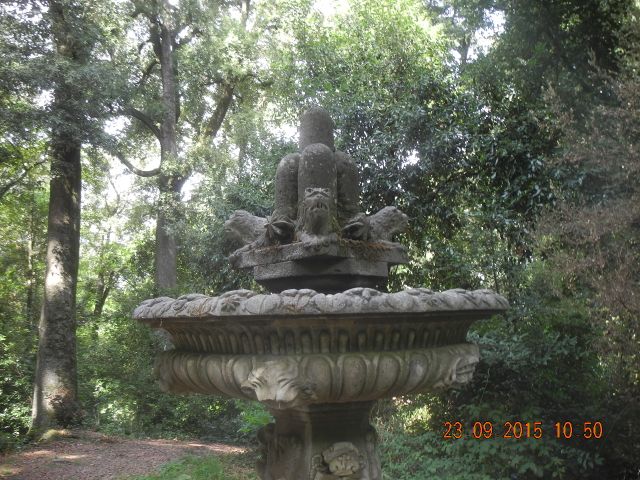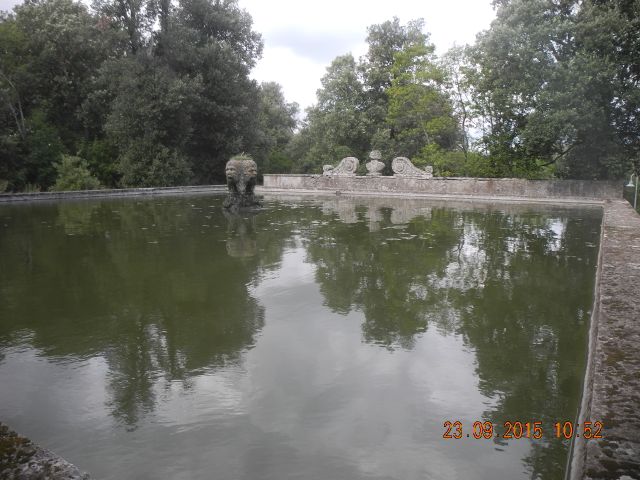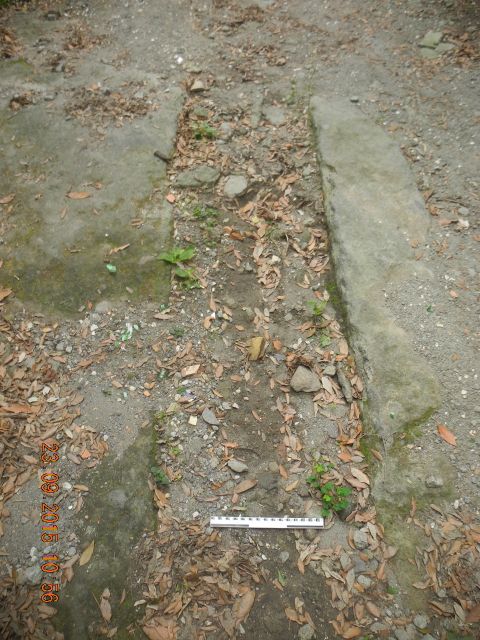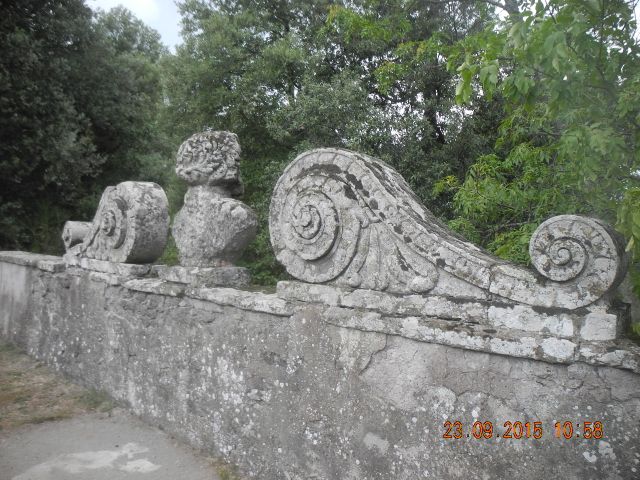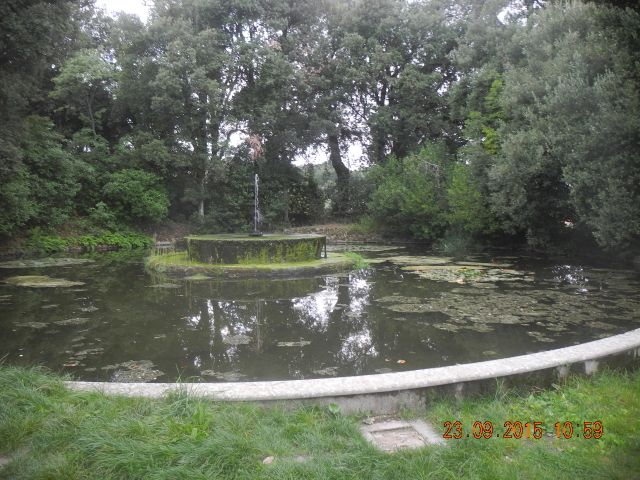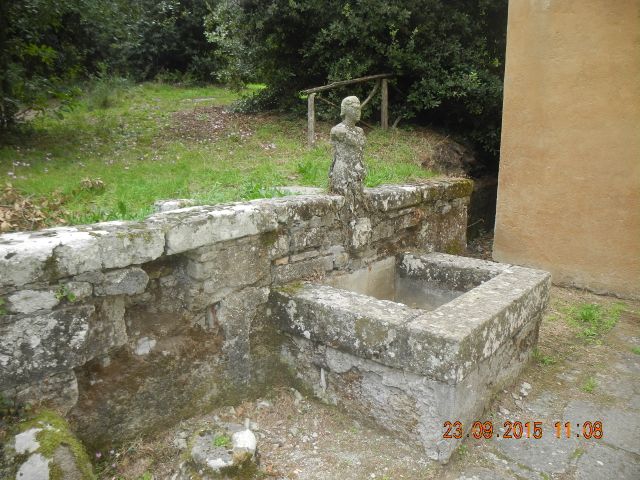Voyages to the House of Diversion
Seventeenth-Century Water Gardens and the Birth of Modern Science
Wednesday September 23rd. Villa Lante, Bagnaia
Lindsay left early to start the long drive back to the UK with
the equipment. We made a return visit to Bagnaia which was much aided
by the fact that it was not market day. Parking was down by the station
and there was plenty of space and it was just a five minute walk up to
the gates of the gardens of the Villa Lante. We had rather given up on trying the
organize special access so simply turned up and paid our five euros
admission on the gate (The survey equipment was by now on it’s way back
to England anyway).
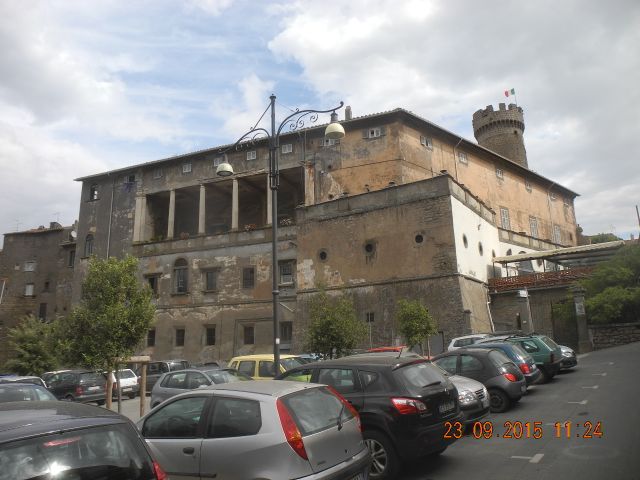
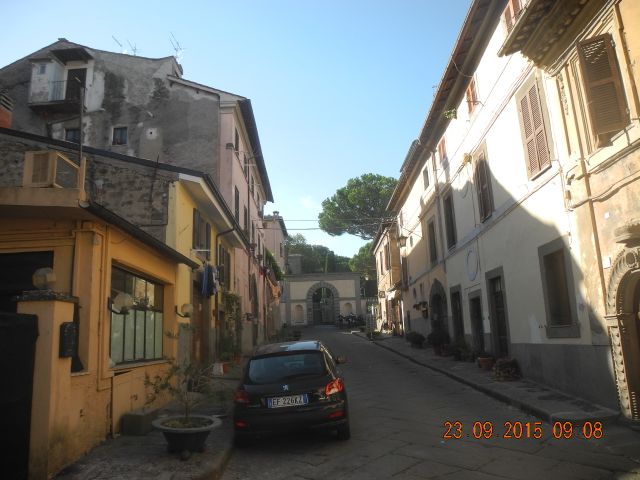
The garden was some way detached from the Palazzo viewed here from the
west and this is the street up to one of the entrances, view looking
south.
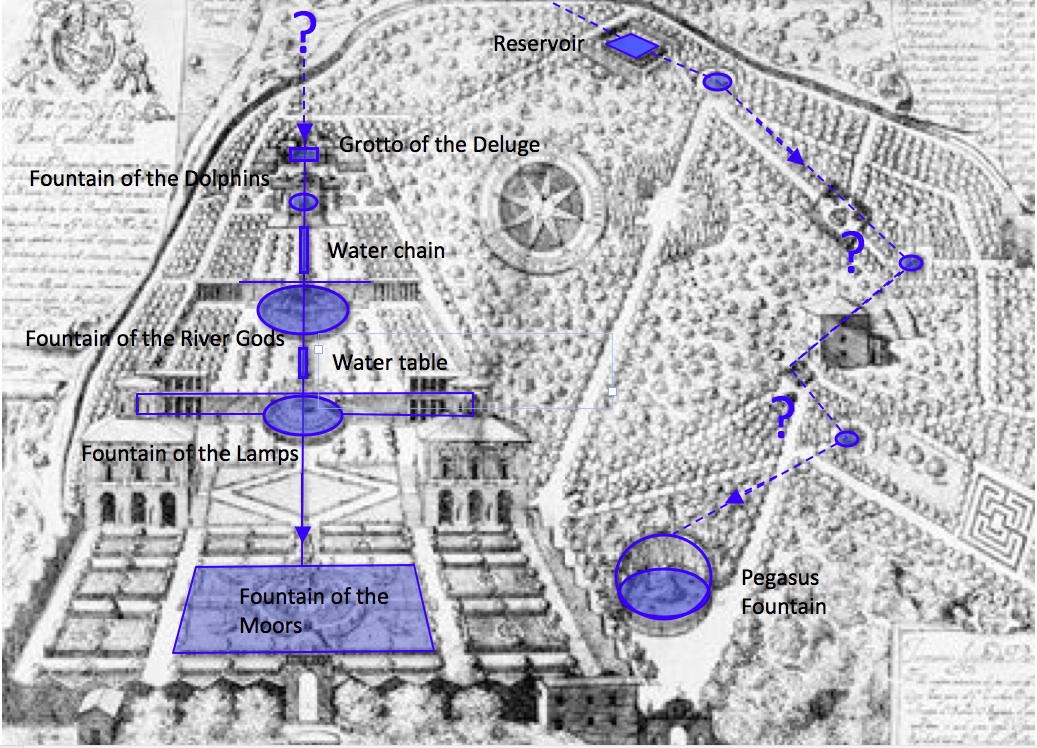
A very speculative map (south is to the top) attempting to think about the flow of water
within the park and garden. There are plenty of traces to follow but we
didn't have the time to really pin them all down.
The first feature of note was the Pegasus Fountain,
outside the formal garden but suitably polished and spectacular, a real
contrast with the rustic charm, if I can put it that way, of Bomarzo. , Access to the park is free, you have to show your tickets to get into the formal gardens. Once inside you
begin in
the most formal of settings with the centrepiece being the Fountain of
the Four Moors, set on its own circular island approached, as at
Boboli, by
four causeways. The fountain was playing but there were multiple other
outlets that could be spotted not in action, pity about the scummy
water but there were some interesting valves and stop cocks on display
for controlling the water. The whole thing is arranged in a similar
manner to Caprarola so it’s a question of climbing the hill and
following the water back to its source although some authors suggest
the intinerary was designed to be the other way round: chaos to order
rathervthan order to chaos.. The next terrace saw the hugely
impressive fountain of lamps, a host of small jets on semi-circular
tiers said to mimic the wavering light of candles. This was flanked by
two grottoes, to the left Neptune with a hollow water spouting trident,
now unfortunately bent and drooping and Venus with twin spurts of water
emerging from her breasts.
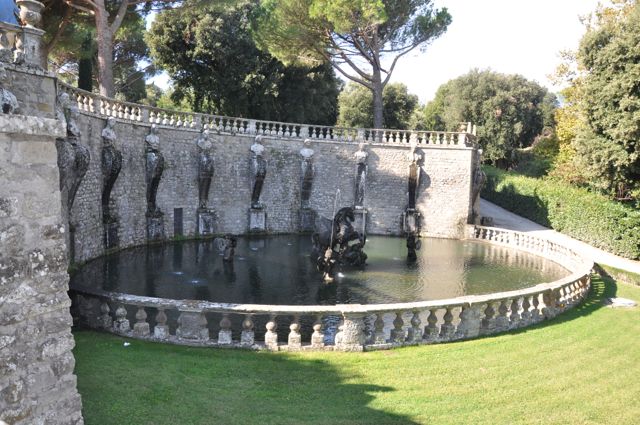
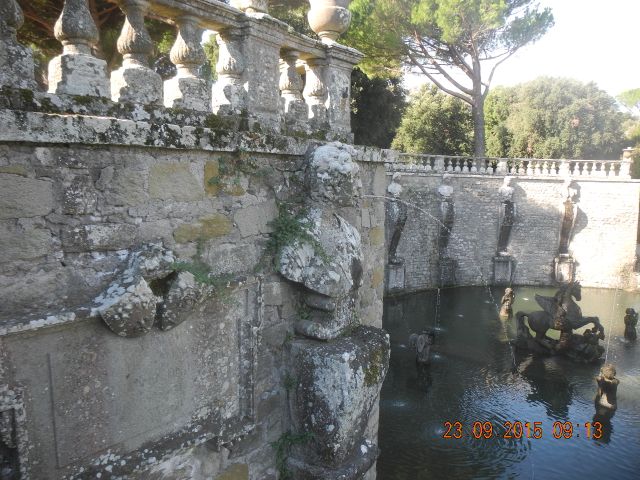
The Pegasus Fountain view looking south west with detail of spouting caryatid.
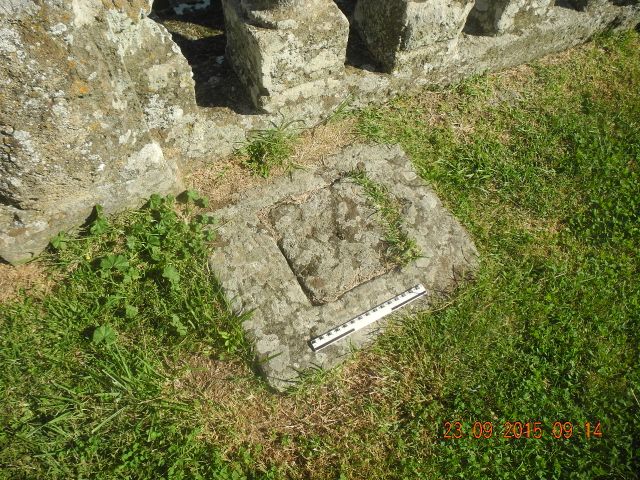
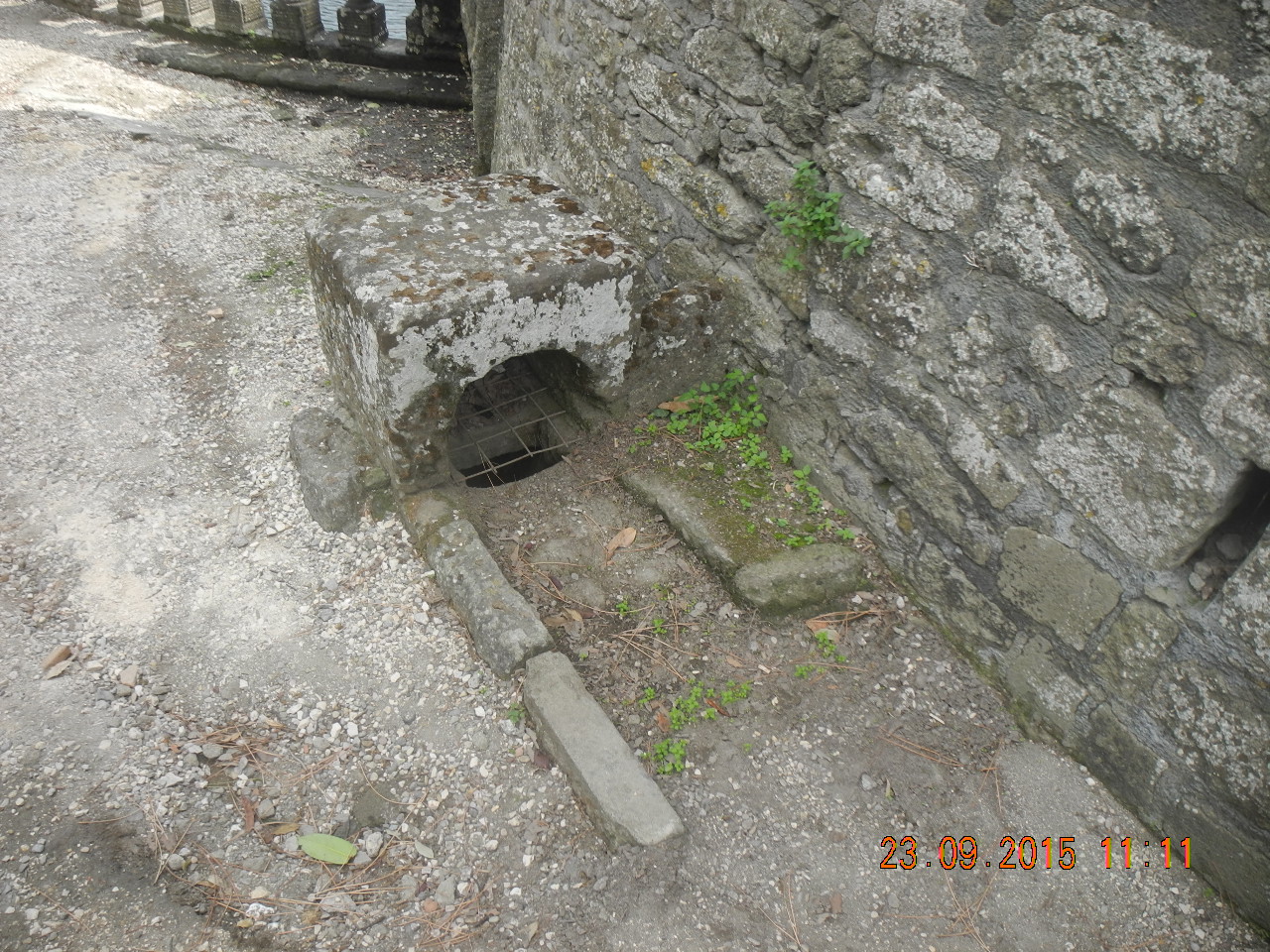
Detail of small access plate on terrace behind the fountain and storm
water drainage feeding into the fountain's basin on its west side.
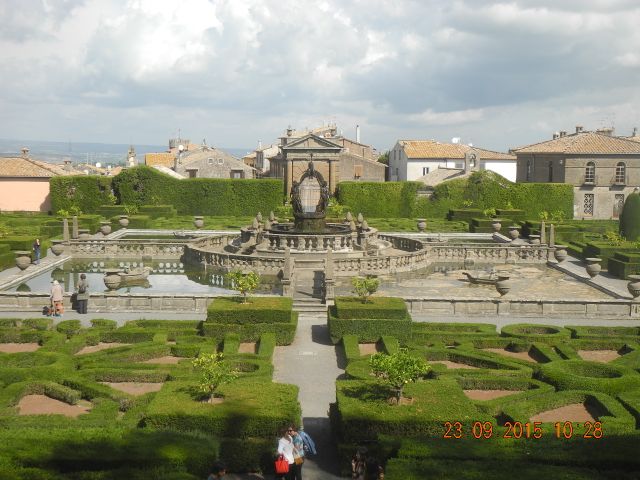
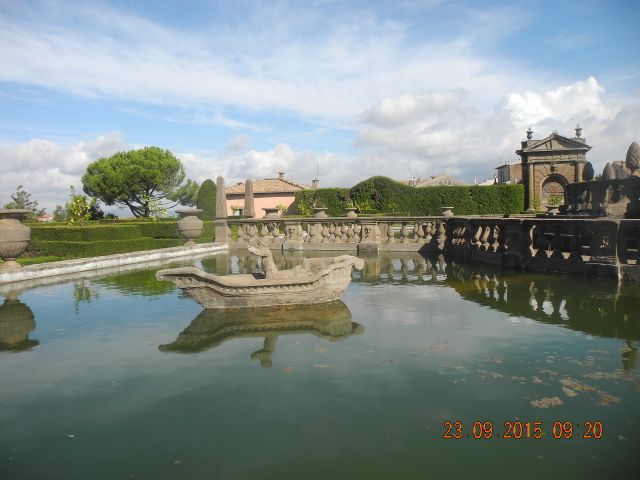
A grand set piece, the Fountain of the Moors set on its island amidst a
square pool, looking north, with a detail of one of the stone boats
plus arquebusier.
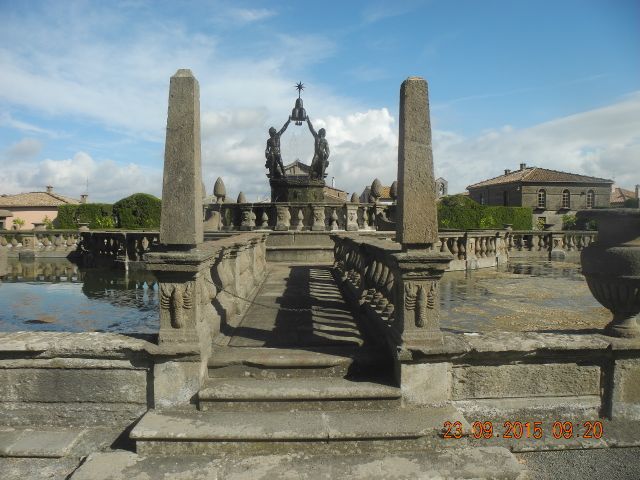
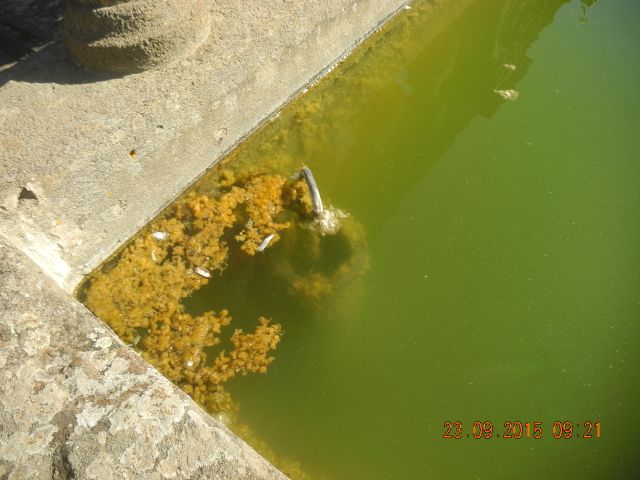
Detail of the approach to the island plus fountain, looking north plus
some kind of plug or control valve, I didn't pull to see what it did.
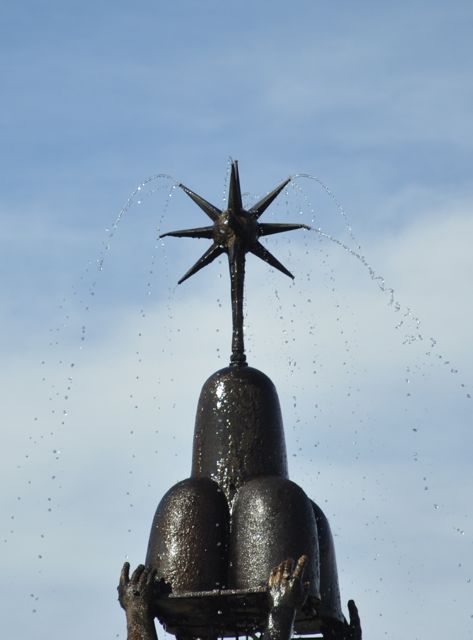
Detail of the spouting star on top of the Fountain of the Moors, the
blancmange like structure represents heraldic mountains, part of the
family's arms.
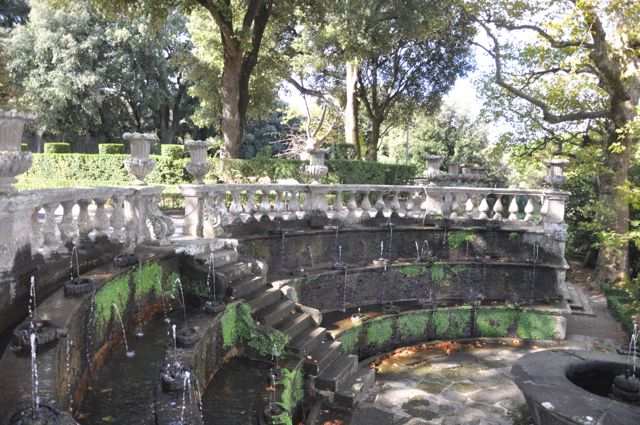
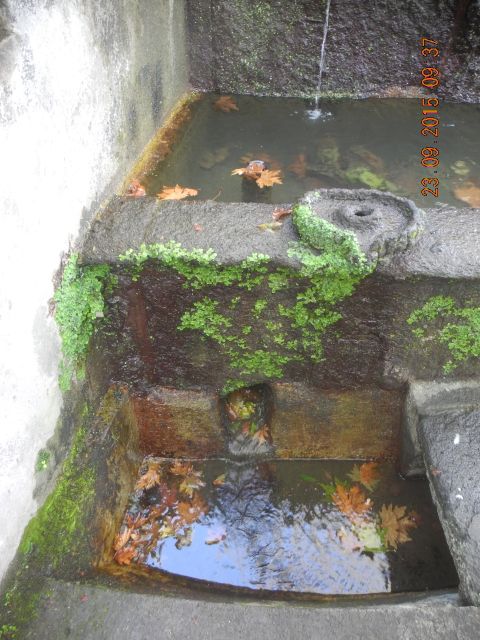
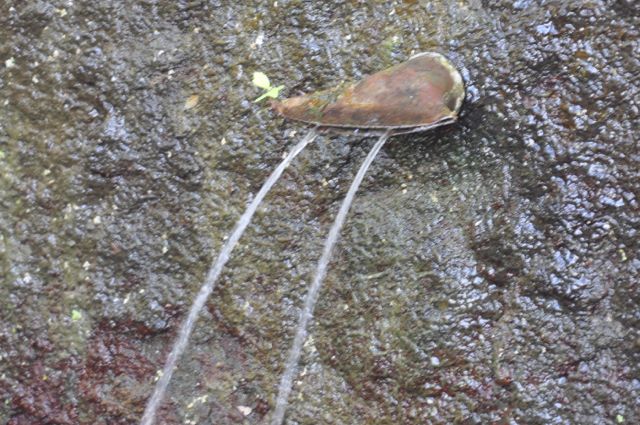
The Fountain of Lamps, or lights or candles, upper portion looking west with detail of drainage and spout.
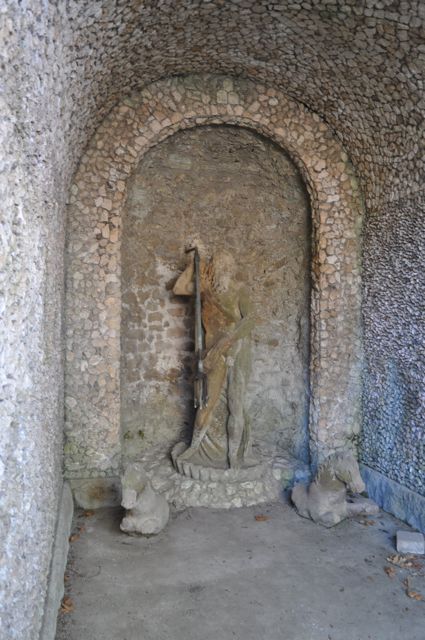
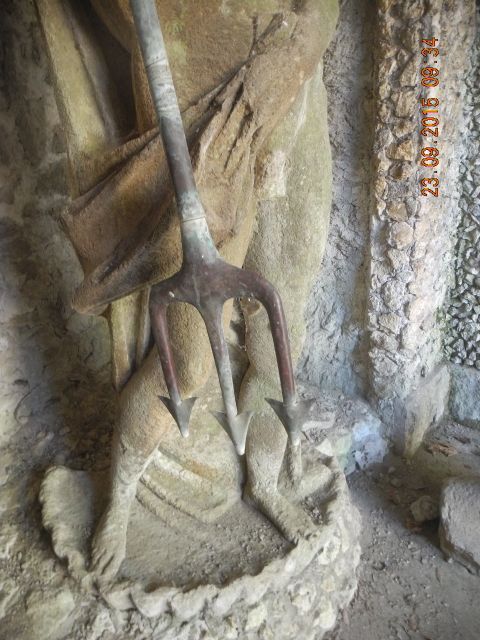
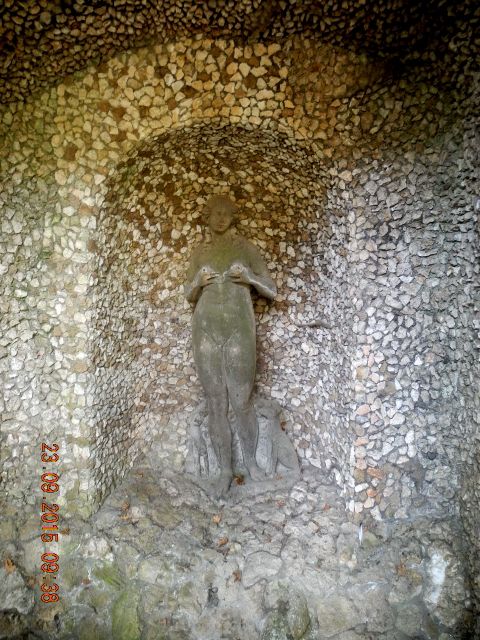
The Grotto of Neptune with detail of trident and the grotto of Venus, all views looking south.
Next in a whole series of famous features was an extended stone table
with a central channel along its length to cool the wine and subsidiary
channels at ground level… to cool the feet? We debated the
practicalities of sitting at such a structure, at least there weren’t
under seat jets as at Hellbrun, and concluded that buffet style service
was probably a more realistic option. Looking down onto this scene of
al fresco dining was a fountain flanked by two river gods shouldering
cornucopia, another echo of Bomarzo, with flanking steps lined with
small basins and spouting masks, an echo this time of Caprarola.
Again, an opportunity to examine in detail the fine copper alloy
nozzles and spouts, there were even small basins and jets on the rear
of the balustrade.
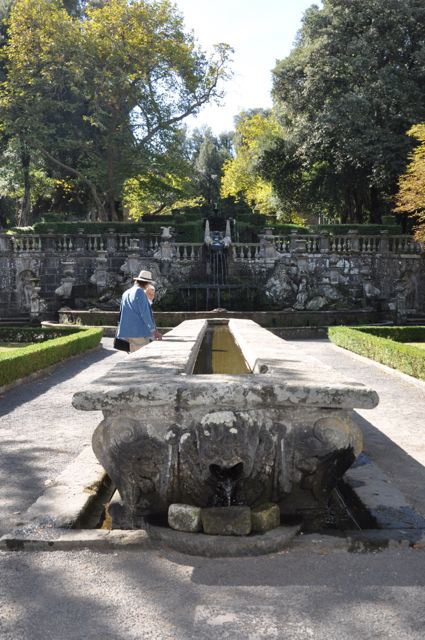
Inspecting the water table view looking south.
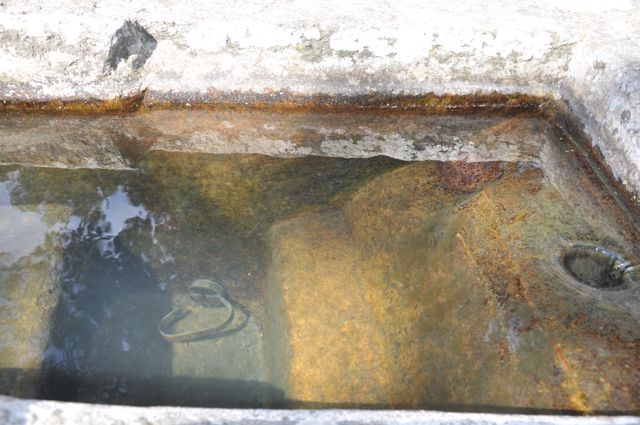
Detail of drainage arrangements at south end of the water table, view looking east.
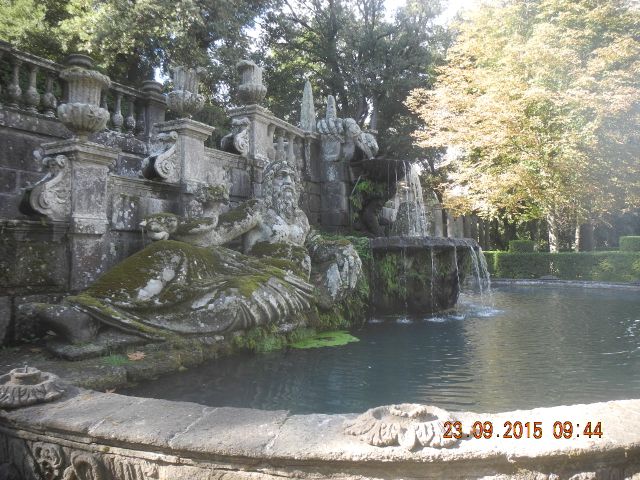
The Fountain of the River Gods, view looking west.
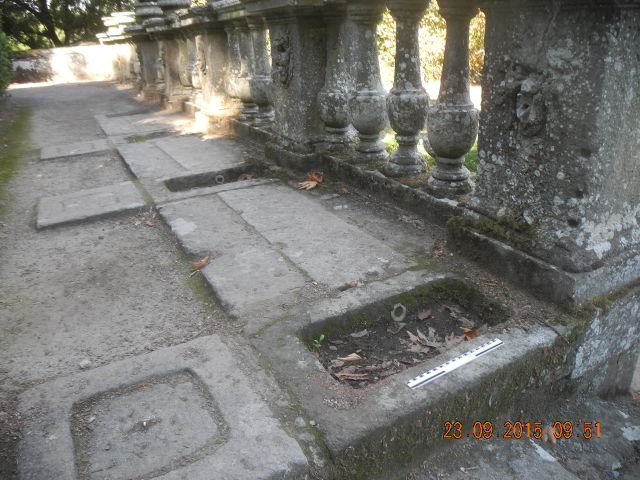
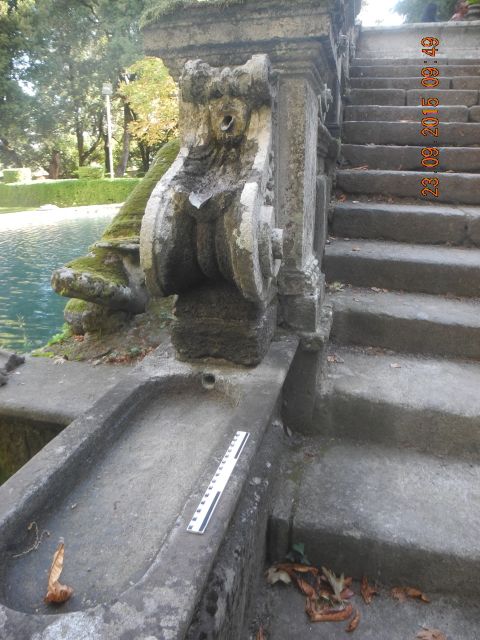
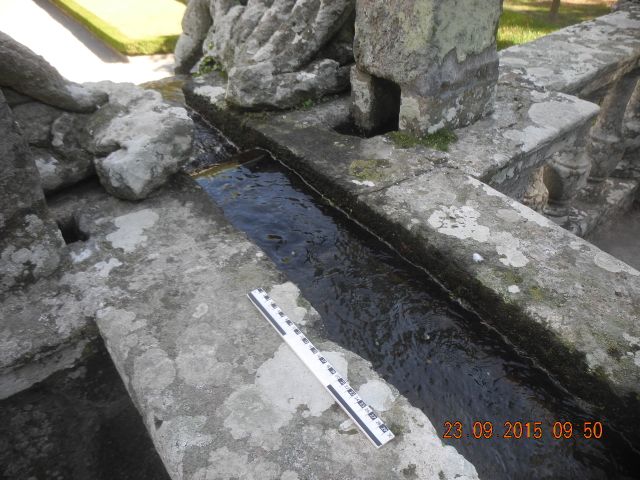
Details of small fountains alongside and to the rear of the Fountain of
the River Gods: behind the balustrade, spouting masks and small basins
looking west, grotesque masks and basins along side the steps
looking east and water calming measures as the flow from the water
chain discharges in the fountain below.
This all lead us up to the wonderful water chain,
arguably the precursor of the similar rather grander version at
Caprarola... or perhaps it was the other way round, anyway even better this one was running with water. In order to
celebrate Cardinal Gambara’s family name carvings of crayfish (gambero
) littered the stone work. Here however the chain began with the head
and mouth parts of the crayfish and ended with the claws which protruded
over the lower balustrade. A nice well thought out touch could be
observed from a sitting position at the head of the water table where
the claws and head merged together to give the impression of an intact
crustacean.
The whole thing originated at the top of the slope at a large grotto
flanked by open loggias. Here one could see at least three largish
cascades plunging into a rather weed ridden pool. This feature was
known as the Grotto of the Deluge and was meant to represent the
primeval waters which were progressively tamed by the wit and good
sense of the Cardinal before finally emerging into the manicured
setting of the square basin containing the island back down the
bottom end of the garden. Making our way back to the lower pavilion we
admired the wall paintings illustrating the gardens here and at
Caprarola. The visit was enlivened by the presence of a large cohort of
Italian secondary school pupils and a smaller group of wired in French
garden enthusiasts.
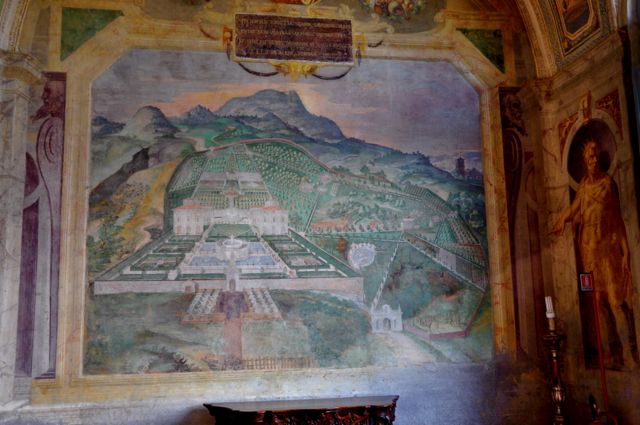
One of the famous garden paintings, this one of Bagnaia itself in the eastern pavilion
In the spirit of true scientific enquiry we then climbed back up
the hill, this time on the outside, to investigate the incoming water
supply, a long curving wall may have brought water in via an aqueduct
but it was not entirely clear. At the opposite corner of the park was a
fine stone built reservoir, partly hidden behind a screen wall, which
presumably supplied the several smaller fountains in the park and
ultimately the Pegasus fountain, which was where we came in.

























